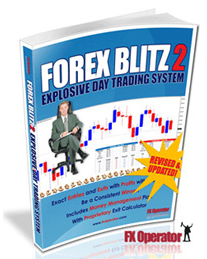How to Read a Chart & Act Effectively
by Jimmy Young, CTA Introduction
This is a guide that tells you, in simple understandable language, how to choose the right charts, read them correctly, and act effectively in the market from what you see on them. Probably most of you have taken a course or studied the use of charts in the past. This should add to that knowledge.
Recommendation
There are several good charting packages available free. Netdania is what I use.
Using charts effectively
The default number of periods on these charts is 300. This is a good starting point;
Hourly chart that's about 12 days of data.
15 minute chart its 3 days of data.
5-minute chart it's slightly more than 24 hours of data.
You can create multiple "tabs" or "layouts" so that it’s easy to quickly switch between charts or sets of charts.
What to look at first
1. Glance at hourly chart to see the big picture. Note significant support and resistance levels within 2% of today’s opening rate.
2. Study the 15 minute chart in great detail noting the following:
* Prevailing trend
* Current price in relation to the 60 period simple moving average.
* High and low since GMT 00:00
* Tops and bottoms during full 3 day time period.
How to use the information gathered so far
1. Determine the big picture (for intraday trading).
Glancing at the hourly chart will give you the big picture – up or down. If it’s not clear immediately then you’re in a trading range. Lets assume the trend is down.
2. Determine if the 15 minute chart confirms the downtrend indicated by big picture:
Current price on 15-minute chart should be below 60 period moving average and the moving average line should be sloping down. If this is so then you have established the direction of the prevailing trend to be
down.
There are always two trends – a prevailing (major) trend and a minor trend. The minor trend is a reversal of the main trend, which lasts for a short period of time. Minor trends are clearly spotted on 5-minute charts.
3. Determine the current trend (major or minor) from the 5 minute chart:
Current price on 5-minute chart is below 60 period moving average and the moving average line is sloping downward – major trend.
Current price on 5-minute chart is above 60 period moving average and the moving average line is sloping upward – minor trend.
How to trade the information gathered so far
At this point you know the following:
* Direction of the prevailing trend.
* Whether we are currently trading in the direction of the prevailing (major) trend or experiencing a minor trend (reaction to major trend).
Possible trade scenarios:
1) Lets assume prevailing (major) trend is down and we are in a minor up-trend. Strategy would be to sell when the current price on 5-minute chart falls below the 60 period moving average and the 60 period moving average line is sloping downward. Why? Because the prevailing trend is reasserting itself and the next move is likely to be down. Is there more we can do? Yes. Look for further confirmation. For example, if the minor trend had stalled for a while and the lows of the past half hour or hour are very close to the 5 minute moving average then selling just below the lows of the past half hour is a better place to enter the market then just below the moving average line.
2) Lets assume prevailing (major) trend is down and 5-minute chart confirms downtrend. Strategy would be to wait for a minor (up trend) trend to appear and reverse before entering the market. The reason for this is that the move is too “mature” at this point and a correction is likely. Since you trade with tight stops you will be stopped out on a reaction. Exception: If market trades through today’s low and/ or low of past three days (these levels will be apparent on the 15 minute chart) further quick downward price action is likely and a short position would be correct.
3) A better strategy assuming prevailing trend down, 5-minute chart down, and just above days lows is to BUY with a tight stop below the day’s low. Your risk is limited and defined and the technical condition (overdone?) is in your favor. Confirmation would be if today’s low was a bit higher than yesterday’s low and the price action indicated a very short-term trading range (1 minute chart) just above today’s low. The thinking here is that buyers are not waiting for a break of today’s or yesterday’s low to buy cheaper; they are concerned they may not see the level.
4) Generally speaking, the safest place to buy is after a sustained significant decline when the bottoms are getting higher. Preferably these bottoms will be hours apart. By the third or forth higher bottom it is clear a bottom is in place and an up-move is coming. As in the example above your risk is limited and defined – a low lower than the last low.
5) The reverse is true in major up-trends.
Other chart ideas
There are always two trends to consider – a major trend and a minor trend. The minor trend is a reversal of the major trend, which generally lasts for a short period of time. Buying above old tops and selling below old bottoms can be excellent entry levels; assuming the move is not overly mature and a nearby reaction unlikely. When a strong up move is occurring the market should make both higher tops and higher bottoms. The reverse is true for down moves- lower bottoms and lower tops. Reactions (minor reversals) are smaller when a strong move is occurring. As the reactions begin to increase that is a clear warning signal that the move is losing momentum. When the last reaction exceedsthe prior reaction you can assume the trend has changed, at least temporarily. Higher bottoms always indicate strength, and an up move usually starts from the third or fourth higher bottom. Reverse this rule in a rising market; lower tops… You will always make the most money by following the major trend although to say you will never trade against the trend means that you will miss a lot of opportunities to make big profits. The rule is: When you are trading against the trend wait until you have a definite indication of a selling or buying point near the top or bottom, where you can place a close stop loss order (risk small amount of capital). The profit target can be a short-term gain to nearby resistance or more.
Consider the normal or average daily range, average price change from open to high and average price change from open to low, in determining your intra-day price targets. Do not overlook the fact that it requires time for a market to get ready at the bottom before it advances and for selling pressure to work it’s way through at top before a decline. Smaller loses and sidewaystrading are a sign the trend may be waning in a downtrend. Smaller gains and sideways trading in an up trend. Fourth time at bottom or top is crucial; next phase of move will soon become clear… be ready.Oftentimes, when an important support or resistance level is broken a quick move occurs followed by a reaction back to or slightly above support or below resistance. This is a great opportunity to play thebreak on the “rebound”. Your stop can be super tight. For example, EURUSD important resistance 1.0840 is broken and a quick move to 1.0860, followed by a decline to 1.0835. Buy with a 1.0820 stop. Themove back down is natural and takes nothing away from the importance of the breakout. However, EURUSD should not decline significantly below the breakout (breakout 1.0840; EURUSD should not go below 1.0825.
After a prolonged up move when a top has been made there is usually a trading range, followed by a sharp decline. After that, a secondary reaction back near the old highs often occurs. This is because the market gets ahead of itself and a short squeeze occurs. Selling near the old top with a stop above the old top is the safest place to sell. The third lower top is also a great place to sell. The same is true in reverse for down moves. Be careful not to buy near top or sell near bottom within trading ranges. Wait for breakaway (huge profit potential) or play the range. Whether the market is very active or in a trading range, all indications are more accurate and trustworthier when the market is actively trading.
Limitations of charts
Scheduled economic announcements that are complete surprises render nearby short-term support and resistance levels meaningless because the basis (all available information) has changed significantly, requiring a price adjustment to reflect the new information. Other support and resistance levels within the normal daily trading range remain valid. For example, on Friday the unemployment number missed the mark by roughly 120,000 jobs. That’s a huge disparity and rendered all nearby resistance levels in the EURUSD meaningless. However, resistance level 200 points or more from the day’s opening were still meaningful because they represented resistance to a big up move on a given day.
Unscheduled or unexpected statements by government officials may render all charts points on a short-term chart meaningless, depending upon the severity of what was said or implied. For example, when Treasury Secretary John Snow hinted that the U.S. had abandoned its strong U.S. dollar policy.

















